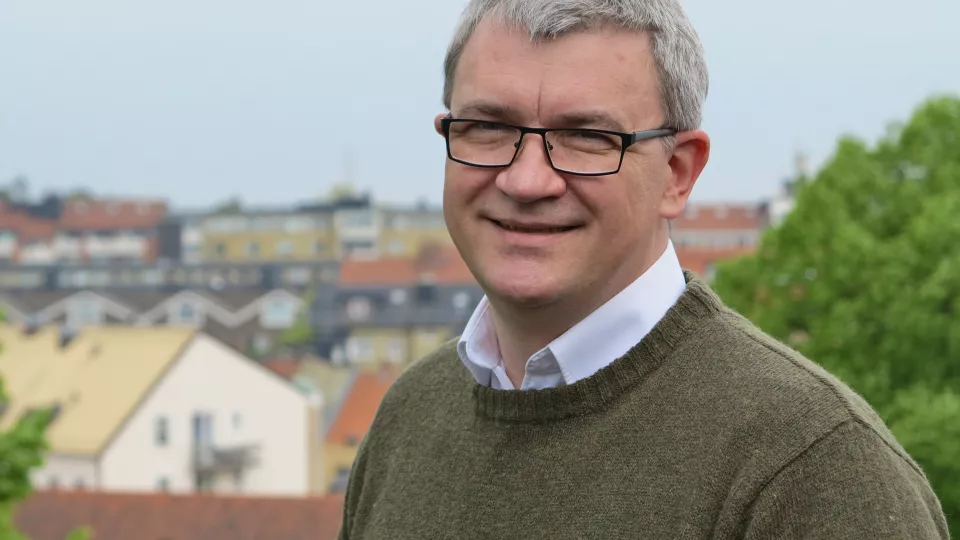New business models and commercial opportunities in lighting:
What stops LEDs from hitting the market?
Energy efficient lighting as in LED is an essential technique in a sustainable society. In Sweden, LED is becoming affordable and has a limitless performance. Yet it is still hardly used in schools, hospitals and public areas. Why? IIIEE researcher Andrius Plepys is part of a project in search of the answer.
Your group is studying the role of the Swedish public sector when it comes to accelerating the market for energy efficient lighting, more specifically solid state lighting (SSL), which we in daily life often call LED light. Why is the public sector interesting in this matter?
– In Sweden, the public sector through public procurement is a large player on the market. It is generally also often the actor raising the demands on the market, asking for more efficient products. The public sector might be more willing to take risks and choose not only the cheapest alternatives for lighting, but prepared to prioritise the benefits of better quality light. There are many examples of how the Swedish public sector has led the market in a more sustainable direction, for example organic food, renewable energy and sustainable transport. But when it comes to LED lighting there are relatively few good examples of sustainable innovative light solutions.
The products are durable, energy-saving, flexible and have many positive effects on human health, productivity and overall quality of life – but the procurers often still opt for the traditional products. This project aims to understand what hinders innovative lighting solutions from hitting the market. Any results yet?
– It is increasingly clear to us that the main reason is a knowledge gap. Knowledge about the possibilities and benefits of LED-based lighting systems is spread among a range of actors; electricians, light designers, architects, building owners, construction planners, etc. Nobody has the full picture, especially not the decision-makers and the procurers, which of course hinders market development. Conflicting interests of different actors are also a considerable factor.
– Also, most organisations in Sweden are comparatively flat, which spreads the decision-making in a way that slows change. In a comparison with Canada, for example, we have seen a clear difference. When there is a ‘big boss’, things change faster. And as long as there are few large-scale cases to refer to, few dare to take the first step.
– The market also needs innovative business models addressing some of the risks in adopting new technologies and light designs. We are looking for and trying to learn from good examples of innovation procurement and new business arrangements. For instance contracts between a procurer and a solution provider, focusing on selling a function rather than a product. This could mean selling/buying area-hours of illuminated space at a pre-defined quality of lighting.
Say ten years from now – how do you think the situation will have changed?
– I think we’ll see a change for the better. LED will be the primary option for consumers and the quality of light will be trendier and more in focus. Legislation will have cleared the market from the most inefficient and low quality products. Also, consumers will be better equipped with knowledge and guidance about the possibilities and the positive effects of a better light. So all in all, more good examples, more regulation and better knowledge are the main factors for the brighter future of lighting.
Text and photo: Sara Bernstrup Nilsson
New business models and commercial opportunities in lighting: The importance of policies and organisation of procurement
- IIIEE researchers: Thomas Lindqvist, Andrius Plepys, Naoko Tojo
- Project time: 1 January 2013 – 31 December 2015
- Budget: SEK 5 3570 722
- Funding agency: Swedish Energy Agency (50%)
Related reading on IIIEE research


